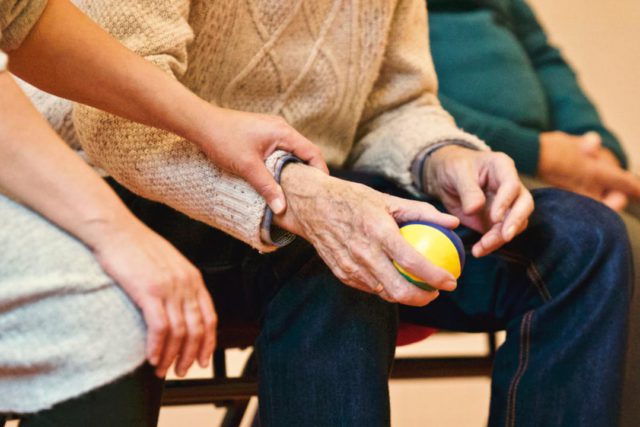Effective leadership is more crucial than ever in today’s rapidly evolving healthcare landscape. As healthcare professionals face the dual challenges of preventing falls among the elderly and implementing robust infection control procedures, innovative strategies are essential. One such strategy involves the integration of HBDI (Herrmann Brain Dominance Instrument) assessments and executive mentoring, creating a dynamic approach to leadership development in healthcare settings. Interestingly, even seemingly unrelated concepts, like basketball uniforms and custom basketball jerseys, can provide insights into teamwork and identity, which are pivotal in a hospital environment.
Understanding the Challenges
The elderly population is at significant risk for falls, which can lead to severe injuries, including fractures and head trauma. To combat this, healthcare facilities increasingly adopt elderly fall prevention devices, including bed alarms and non-slip flooring, to wearable technology that alerts caregivers of potential falls.
Simultaneously, hospitals must adhere to stringent infection control procedures to protect vulnerable populations. The spread of infections in healthcare settings can be deadly, particularly for elderly patients who may have weakened immune systems. Adopting best practices in infection control—such as hand hygiene, sterilization of equipment, and proper use of personal protective equipment (PPE)—is essential in reducing the incidence of hospital-acquired infections.
The Role of Executive Mentoring
Executive mentoring is a vital tool for developing strong leaders within healthcare organizations. Organizations can cultivate a culture of learning and accountability by fostering relationships between experienced leaders and emerging professionals. Mentors can guide best practices in patient care, including implementing fall prevention devices and infection control measures.
Utilizing HBDI assessments in this mentoring process allows organizations to understand the thinking preferences of their leaders. This understanding helps mentors tailor their approach to fit the unique cognitive strengths of their mentees, making the mentoring process more effective.
For instance, a mentor with a solid analytical background might focus on data-driven strategies for fall prevention. In contrast, a mentor with a relational style might emphasize the importance of team collaboration in infection control. This customized mentoring approach enhances individual leaders’ skills and promotes a culture of safety and quality care throughout the organization.

Connecting HBDI to Healthcare Practices
Applying HBDI assessments can lead to improved communication and collaboration among healthcare teams. For example, team members can work together more effectively when they understand each other’s thinking preferences. In the context of fall prevention and infection control, nurses, doctors, and support staff can align their strategies and share information seamlessly, ultimately improving patient outcomes.
Moreover, the insights gained from HBDI assessments can inform staff training programs. By understanding their cognitive strengths and areas for growth, healthcare professionals can engage in continuous learning that directly impacts their ability to implement fall prevention devices and adhere to infection control procedures. This approach not only benefits patient safety but also enhances job satisfaction and retention among staff.
Lessons from Basketball: Teamwork and Identity
At first glance, basketball uniforms and custom basketball jerseys may seem unrelated to healthcare. However, they embody critical lessons about teamwork and identity that are highly relevant in hospital settings. Just as athletes wear uniforms to represent their team and foster a sense of unity, healthcare professionals benefit from cultivating a strong team identity.
In healthcare, teamwork is essential for effective patient care. Each team member plays a vital role in ensuring the safety and well-being of patients, particularly in the context of fall prevention and infection control. Custom basketball jerseys symbolize the importance of each player’s contribution, reminding healthcare workers that they are all part of a larger mission.
By adopting the spirit of teamwork found in sports, healthcare organizations can create a culture that emphasizes collaboration and shared goals. Inspired by sports, team-building exercises can enhance communication and trust among staff, leading to more effective implementation of fall prevention strategies and infection control measures.
Future Directions: Embracing Innovation and Technology
Embracing innovation and technology will be crucial in enhancing fall prevention and infection control efforts in healthcare settings. Emerging technologies, such as artificial intelligence and machine learning, can aid in identifying at-risk patients and predicting potential falls based on real-time data analysis. Additionally, telehealth solutions can provide ongoing support and monitoring for elderly patients, reducing the need for hospital visits where infection risks may increase. By integrating these technological advancements with strong leadership practices, healthcare organizations can create a proactive and responsive environment that prioritizes patient safety. The synergy of executive mentoring, HBDI assessments, and innovative tools will empower healthcare leaders and pave the way for a future where quality care is consistently delivered, minimizing risks for the most vulnerable populations.
Integrating executive mentoring, HBDI assessments, and insights from teamwork in sports presents a multifaceted approach to enhancing leadership in healthcare. As organizations grapple with the challenges of elderly fall prevention and infection control, fostering strong leaders equipped with the right tools and knowledge is paramount. By prioritizing effective communication, collaboration, and a shared sense of identity, healthcare facilities can significantly improve patient outcomes and create safer environments for all.
In this complex healthcare landscape, innovative strategies—whether through executive mentoring or the lessons learned from sports—can improve patient safety and care quality. By investing in leadership development and fostering a culture of teamwork, healthcare organizations can navigate these challenges and provide the best possible care for their patients.



MOST COMMENTED
Pregnancy & Family
Why Nanny Sharing Benefits the Whole Family
News
Enhancing Healthcare Leadership
Beauty
How To Choose Coloured Lenses For Your Skin Tone
Design
Creating the Perfect Cosplay Costume